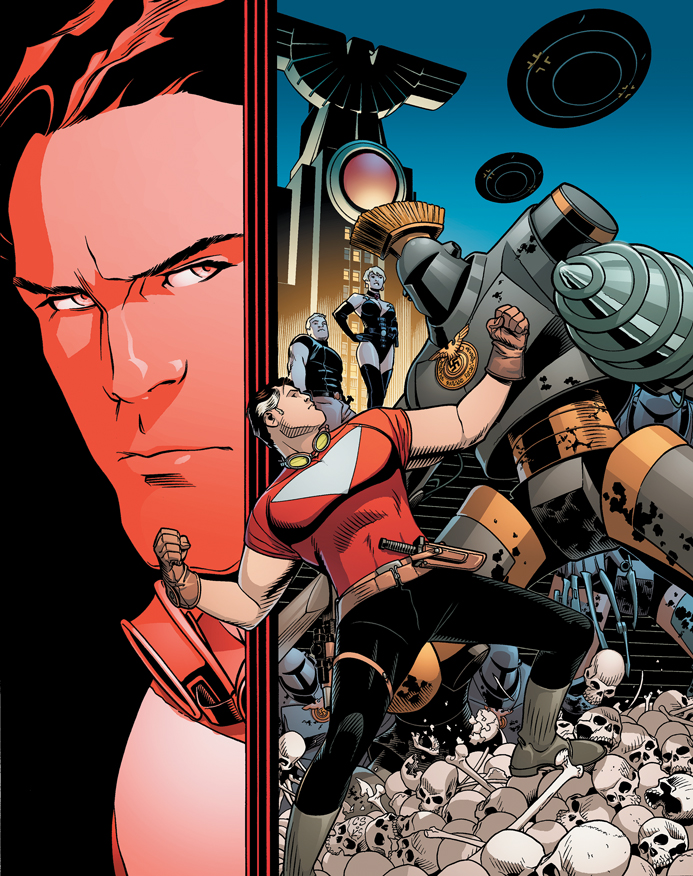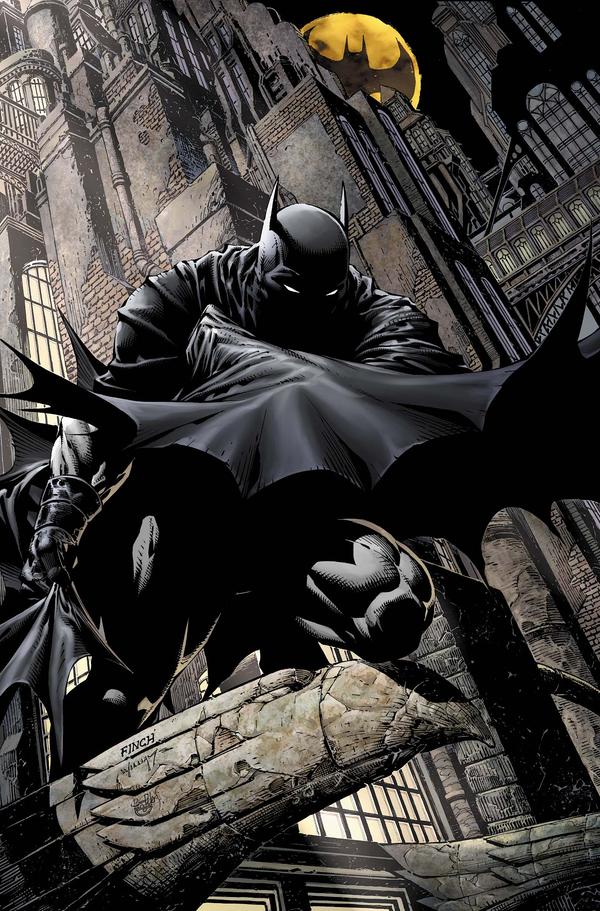Poor Falcon. (No Spoilers, I Promise)
/So, that Marvel Star Wars omnibus from Dark Horse I mentioned in last week's reviews? I basically thought I'd be working on that thing for a month or two, or that I might even have a hard time reading it at all after a point. Turns out I'm nearly finished all 500 pages of it! It was actually kind of tough to tear myself away from it to read new comics this week. I don't know what this says about me--I think it probably has more to do with the irresistible pull of nostalgia than the quality of the comics themselves--but I'm already committing myself to buying the next volume this fall. In the meantime, there are new comics out there too! Every week, it seems!

Tom Strong and The Robots of Doom #1: I can’t help but wonder—does Alan Moore have any say in DC/Wildstorms’ continuing use of his America’s Best Comics characters? That’s not to say that there hasn’t been interesting material released without his consent, if that is in fact the case; last year’s Top Ten Season Two miniseries was quite good, and I also enjoyed the first issue of this new Tom Strong four-parter. It doesn’t hurt that in both cases, the original series artist—Gene Ha on the former, and Chris Sprouse on the latter—returned to handle the visuals. Sadly, it’s really hard to get anyone excited about these characters without the involvement of Mr. Moore, and that’s a shame because there’s clearly a lot of life left in his ideas. I don’t know that this new Tom Strong series--in which Tom’s evil Nazi bastard kid Albrecht messes around with the timestream, using an indestructible robot army to win World War II for the Axis—is particularly new reader-friendly, as it builds naturally off of several stories from the book’s original run. Peter Hogan’s script does make a point of dropping some on-the-go introductions of Tom’s cast, like his wife Dhalua, his daughter Tesla, their robotic butler Pneuman, and the family’s intelligent gorilla pal King Solomon, but it’s not long before this group is irrevocably altered by Albrecht’s machinations. Like I said, a bit daunting for newbies, but for old fogies like me who remember that, only a little over a decade ago when we had four or five ongoing superhero (I’m sorry, science hero) comics written by Moore being published at the same time, it’s like visiting with old friends.

Tales Designed To Thrizzle #6: I never quite realize how much I miss Michael Kupperman’s roughly-annual blasts of ridiculousness, until a new issue drops and it’s like a breath of fresh, absurd air. In this latest issue, new features like Jungle Princess (which deals with the threats of rhino smuggling and falling magazine ad revenues in equal measure) and All About Drainage share page space with classic Thrizzle bits like Twain & Einstein. My personal favourite strip this time out is Willie Wealth, a Richie Rich parody that calls attention to the serious problem of eating your wealth as though it were food. Thrizzle may not be for everyone—if you don’t enjoy surreal comedy in the vein of Adult Swim’s Aqua Teen Hunger Force or Tim & Eric Awesome Show Great Job, you may want to give this one a wide berth. However, if phrases like “I am farting my way to a beatoff bonanza” makes you giggle uncontrollably for way too long, then you seriously need to get thrizzled.

…but that’s far less insulting than the fact that his half of a double-page spread appears to have been cropped out entirely to make room for a Honda ad!

Now obviously, I’m not 100% sure that’s what happened here, but I can’t imagine why Butch Guice would draw his legs in there if the rest of him wasn’t supposed to be visible too. Mighty suspicious.

Batman #700: A Grant Morrison comic can be plenty confusing even without the introduction of time travel. But even though the central mystery of this extra-sized anniversary issue, which involves a time-travelling “Maybe Machine”, the Joker’s lost Jokebook, and several incarnations of Batman over the decades (centuries, even), didn’t make a lot of sense, it was still a fun, multi-faceted look at the character’s many iterations over the years. I’m not sure that Tony Daniel was the right artistic choice to illustrate the Biff! Pow! era of Batman’s career—wouldn’t someone with the pop-art sensiblities of, say, Mike Allred have been more appropriate?--but I think he mostly pulls it off. I also wish Frank Quitely could have drawn the entirety of the present-day Dick Grayson Batman segment (Scott Kolins ably handles the last three pages, but the change in styles is pretty jarring), but it was cool to see Andy Kubert return to the title to revisit the sinister Damian Wayne future-Batman last seen in #666. As an aside, this issue cemented my enjoyment of Dick as Batman once and for all—the scene where he calls a GCPD officer by his first name and asks how his kid is doing had me grinning.

Moving Pictures: This new Top Shelf-published book from Kathryn and Stuart Immonen is one of those books that must be read very carefully—there’s just as much, if not more, going on between the panels as there is within them. Set during the German occupation of France during WWII, Moving Pictures follows a museum curator, a Canadian woman named Ila, as she attempts to hide, and thereby protect, several priceless art pieces from being claimed by the Nazi treasuries. This scheme is made more complicated by her romantic involvement with an officer from the Military Art Commission, who is charged with finding the missing art. The story shifts back and forth in time, beginning with Ila being questioned by Rolf, gradually revealing more about her plot and their relationship in a series of flashbacks. This is a story of historical intrigue that, despite its particular backdrop, avoids the usual imagery of Nazi soldiers, concentration camps, or firearms of any kind; what we don’t see on the page remains just as terrible a threat as it would if we had seen it. That controlled, assured subtlety in Kathryn Immonen’s script elevates Moving Pictures from a simple tale of wartime intrigue into a more complex meditation on the personal and cultural significance of art. Stuart Immonen’s art is equally spare, his characters realized from the simplest of shapes and often defined by the shadows around them. A quietly affecting historical drama, as far removed from the couple’s recent Marvel Comics work as you can imagine.




